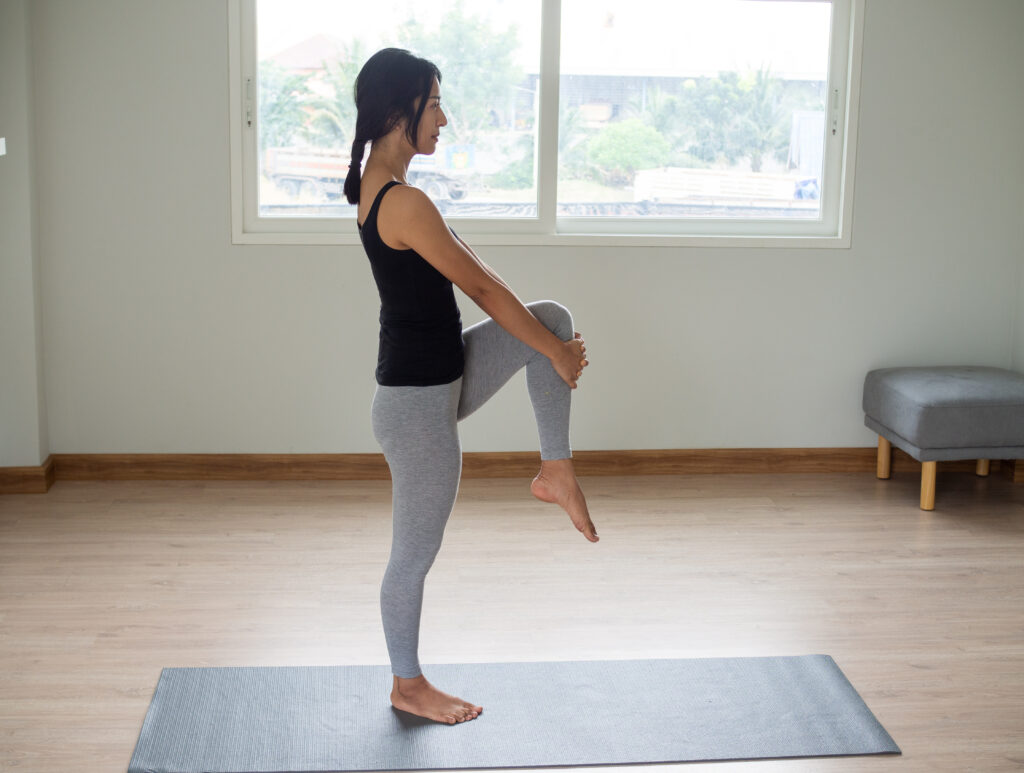Gynaecological cancer
Home / Gynaecological cancers
What is gynaecological cancer?
More than 6,000 women are diagnosed with gynaecological cancer (including cancer of the uterus [or endometrium], ovaries, cervix, vagina, vulva, fallopian tubes, and placenta) in Australia each year.
Survival rates five years after diagnosis vary by cancer type (uterine, 83%; cervical, 72%; and ovarian, 44%); importantly, survival rates are progressively improving. Treatment usually involves surgery and adjunct therapy, but sometimes chemotherapy and radiotherapy are used, alone or in combination, without surgery.
Possible side effects
- Fatigue
- Hair loss
- Adverse changes in body composition (an increased percentage of fat and declines in muscle)
- Weight gain
- Nausea
- Sleep concerns
- Joint and other types of pain
- Bone loss
- ‘Chemo brain’ (feeling vague)
- Lymphoedema (swelling)
- Peripheral neuropathy (pain and tingling in the extremities)
- Changes in bowel and bladder habits.


How does exercise help with gynaecological cancer?
Exercise plays an important role in the treatment of, and recovery from, gynaecological cancer through reducing the number and severity of treatment-related side effects and symptoms (such as pain, fatigue, sleep disturbances, and cognitive impairment), as well as improving or maintaining function during and after treatment.
Only a limited number of studies have specifically investigated the value of exercise for survivors of gynaecological cancer.
Common concerns
- Fear of worsening symptoms (e.g. lymphoedema, fatigue, pain, nausea) – those who exercise regularly are less likely to experience these symptoms and, if they occur, the symptoms are typically less severe. In contrast, inactivity has been associated with the onset and worsening of these side effects. Using a diary to monitor exercise and side effects is an
effective way to demonstrate that exercise, at the very least, does not worsen existing side effects. - Lymphoedema is a common side effect may even develop before treatment and can persist for years after treatment. Swelling can occur in the legs, lower abdomen, genitals, and buttocks. Associated symptoms include pain, heaviness, discomfort, weakness, ‘pins and needles’, and difficulty moving. Exercise encourages fluid to drain back through the body’s circulation, but many women fear that exercise will cause or worsen lymphoedema. However, studies of women at risk of, or who have developed lymphoedema following breast cancer, show that progressive aerobic or resistance exercise is safe and beneficial. In addition, avoidance of standing or sitting with legs down for long periods helps to prevent fluid gathering around feet and calves, while regular movement helps the muscles pump the fluid away. Aqua aerobics and swimming are especially helpful when lymphoedema is present
- Trouble exercising during treatment periods with intense side effects is common. Some women find they cannot maintain
their usual exercise routines in the days immediately after a cycle of chemotherapy, or when symptoms are particularly intense. Instead of avoiding exercise altogether at these times, having a separate exercise program for ‘bad days’ is useful. For example, instead of a 30-minute walk on the three days after chemotherapy, do 4 5-minute walks. Exercise on ‘bad days’ helps maintain the habit of exercising while preventing or reduces functional declines associated with treatment periods without exercise. - Skin irritation caused by radiation makes wearing a bra uncomfortable. This creates issues when women find exercising without breast support uncomfortable or embarrassing. A cotton singlet with the bra on the outside of the singlet may reduce friction. Alternatively, a modified exercise program that reduces bouncing (e.g. stationary cycling) may be necessary for the few weeks that when skin irritation is an issue.
- Discouragement from not seeing improvements can be disheartening. Without a structured exercise program, declines in physical function during treatment are likely. While improvements in function during treatment are possible through exercise, at the very least, exercise during treatment can minimise or prevent typical treatment related declines.
- General resitance to exercise is common among survivors of gynaecological cancer as they still need to overcome all the usual exercise barriers experienced by people without gynaecological cancer (e.g. affordability, time constraints, lack of interest, or motivation).
If your symptoms get worse during or after exercise, please seek help from your health professional.

What type of exercise is best for gynaecological cancer?
- Aerobic-and resistance-based exercise is safe and beneficial. Walking, weights training, and gym-based exercise have been well evaluated for safety or efficacy, whereas sports and other activities have not. Nonetheless, individuals should be encouraged to participate in their preferred exercise unless contraindicated (e.g. if there is an increased risk of fractures or infection).
- Moderate-intensity exercise is recommended. For those not already regularly exercising, it is recommended that you start at low- to moderate- intensity and progress gradually. For regular exercisers, it is likely safe to exercise at high intensity, but it is important to progress gradually up to this.
How much exercise should I be doing?
Current guidelines recommend maintaining or building up to 150 minutes of exercise each week. Exercise can be done in sessions as short as 10 minutes and should include either or both aerobic- and resistance-based exercises. It is best to spread exercise sessions out across the week (e.g. 30 minutes on 5 days of the week). Depending on the intensity of the resistance-based exercise, it may be necessary to avoid doing resistance based exercises on consecutive days. Additional benefits may be gained by exercising for up to 300 minutes each week, but it is important to progress towards this amount gradually.
Whilst many can safely exercise during or following treatment for breast cancer without supervision, support from a qualified health professional may help in commencing and maintaining a safe exercise program.
Find a professional
Talk to your GP or other treating specialist about an exercise program that suits your personal preferences and circumstances.
Alternatively, Accredited Exercise Physiologists, who are university-trained health professionals with expertise in the design and delivery of lifestyle interventions for people with chronic and complex conditions including gynaecological cancer, will be able to create an individualised exercise program that suits your needs.
Frequently asked questions
What is an Accredited Exercise Physiologist (AEP)?
An Accredited Exercise Physiologist (AEP) is an allied health professional that prescribes individualised exercise therapy to help people manage their chronic conditions, disabilities, long-term injuries and so much more. They are the most qualified professionals in Australia when it comes to the prescription safe and effective of exercise therapy.
Who should see an AEP?
Anyone who wants to move safely and improve their health can benefit. From chronic conditions to injury recovery, or simply wanting advice on how to exercise right, an exercise physiologist is the expert to see.
Is an AEP covered by Medicare or private health insurance?
Yes. As allied health professionals, exercise physiology services are recognised in government health funding including Medicare, National Disability Insurance Scheme (NDIS) and Department of Veteran’s Affairs (DVA), workers’ compensation and private health insurers. It’s important that you check with your provider as coverage can vary.
Where can I find an AEP?
Use recognised directories like Exercise & Sports Science Australia (ESSA), ask your GP or look for allied health clinics with AEP credentials.


